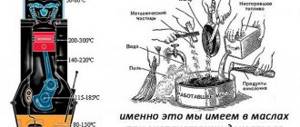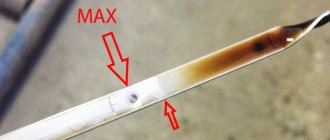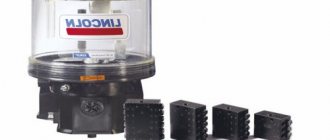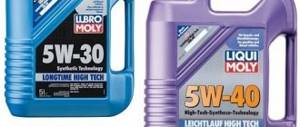Cars equipped with automatic transmissions appeared in the 1930s. This type of gearbox is reliable. The gear ratio changes automatically. It all depends on the speed and engine speed. It is worth highlighting the presence of a planetary gear set, a torque converter, and a control system.
Types of transmission oils
It is necessary to add oil of the same brand as was
To ensure that the transmission system does not lose its operating properties, a car with an automatic transmission should be filled with oil of the appropriate class. As a rule, ATF fluid is used for this type of transmission. It is possible to purchase synthetic, semi-synthetic, and mineral oils. Car owners have a demand for the first of these types of transmission fluids.
Advantages of synthetic oils:
- Ensuring high-quality lubrication of rubbing parts.
- Optimal viscosity.
- Resistant to sub-zero temperatures.
Mineral oils, when compared to synthetic ones, have poor performance characteristics. Semi-synthetic ones provide an antioxidant effect and do not lose their properties when used at low temperatures. Thanks to the properties of synthetic oils, long-term operation of gearboxes is ensured.
For each specific version of the car, the transmission fuel replacement interval is individual. However, in most cases, automatic transmission fluid replacement is necessary at 60,000 km. Every 15,000 km the oil level should be checked. Premature replacement may be due to the fact that the driver systematically violated the basic rules for operating a car, towing, etc.
Thus, when choosing transmission fuel, the car owner should strictly follow the manufacturer’s recommendations and purchase a fluid that provides excellent lubricating properties.
For most modern cars, GL-4 (5) class oils are suitable. It’s worth figuring out how to add oil to an automatic transmission and checking its quantity in the box.
Scheme of work for changing the oil in an automatic transmission and normalizing the level
To change the oil, you need to get to the drain plug, and this requires removing the engine crankcase protection. To dismantle the protection you will need a socket wrench or x10 socket. Removing the mounting bolts will be significantly easier if you use a ratchet wrench when unscrewing.
- the engine warms up on a flat surface to operating temperature until the main radiator cooling fan comes on, then turn it off
- the external drain plug of the gearbox is unscrewed and about 100 grams of fluid is drained if the level is normal
- the internal plastic plug for the level is unscrewed and about 3 liters of liquid are drained
- screw the internal plastic plug of the control hole to normalize the level with a torque of 1 ± 0.1
- screw in the outer drain plug with a torque of 4.8 ± 0.5
- first clean the filler plug with a special cleaner from dust and dirt, then unscrew it
- 3.5 liters of oil are poured in and the filler plug is screwed in with a new sealing gasket with a torque of 4 ± 0.4
- start the engine and warm it up to operating temperature until the main radiator cooling fan starts working
- do not turn off the engine and unscrew only the external drain plug to normalize the level
- As soon as the excess oil is drained in a thin stream to the point of droplets, close the outer drain plug, the engine should be running, now the level is normal
- turn off the engine, after 100-150 km we will repeat the operation to change the oil in the automatic transmission box
Read on for a detailed description of changing the automatic transmission oil and at the end of the post find out how to check the level... First, before removing the crankcase protection, it is recommended to treat all fasteners with a rust preventative, for example, WD-40 or the like. This is necessary for easier recoil of the fastening bolts, since in most cases, on used cars, they become sour and problems arise with unscrewing them, and as a result, the threads can be “broken.” When installing the protection in its place, it is recommended to first clean the bolts from dirt and rust with a metal brush and treat all bolts with a temporary thread locker, which protects the threads from corrosion and facilitates subsequent disassembly. Plus, the clamp keeps the bolts from unscrewing during vibration, maintaining the reliability of the connection.
Checking the transmission fluid level
When the oil level in the box decreases, it becomes necessary to check the integrity of the ECU and gearbox pipes. However, in most cases, the cause of the leak may be due to worn out rubber elements. Also, an insufficient amount of transmission fluid leads to noise and knocking from the automatic transmission. The machine needs a full diagnosis if slipping is felt when moving.
If the reason lies in worn out oil seals, it is worth adding oil to the box. In this case, it is necessary to replace components that have lost their properties.
Using a dipstick, it is possible to accurately determine its quantity. As a rule, this procedure should be carried out when the car is warm. Thanks to the dipstick, it is possible to find out about the condition of the transmission oil. It should not contain metal shavings and be dark. If this fluid has changed color, this may be the reason why the automatic transmission is slipping.
If the vehicle does not have a dipstick, checking is possible using the inspection hole. In both cases, the machine must be standing on a flat surface and should be placed in the inspection hole. If the check is carried out on a cold engine, then the fluid level is slightly higher than the real one.
Measurement using the control tube
Now, let's look at transmissions that are not equipped with a dipstick. After warming up the box, the car should be placed on an overpass or over an inspection hole, since we will need to “crawl” under the box.
Such transmissions themselves were initially designed by the manufacturer for service only. No, of course, even an ordinary car enthusiast can work with it, but this will require more effort and time to be put into checking the oil. You will also need the ATP fluid itself, and of the same brand that is currently in the transmission. Mixing one brand of oil with another is not allowed.
This process can only be called an oil check at a stretch, since, first of all, the automatic transmission control tube is designed only to protect the box from oil overflow. But it is still possible to estimate the oil level using it. To do this, place the car on a flat surface, since the slope of the car, and therefore the gearbox, will shift the oil in the unit to the side and will not allow us to assess its level.
So, our car is standing, the engine is running, and the gearbox selector is left in the “parking” position. To correctly further set the oil level, it is necessary to measure the transmission temperature using a computer connected to the car. Some car enthusiasts, in the absence of special instruments, advise measuring the temperature of the oil by dropping it on your hand - it should not be either hot or cold, about 36 degrees Celsius - the temperature of the human body. The method is cunning, but it is not very accurate, which is exactly what we need to set the ATP level. Therefore, without a special computer or, for example, a thermal imager, we still recommend contacting a specialized service.
When the temperature remains at the level we need, in accordance with the manual, we find the control tube plug at the bottom of the box. We unscrew the plug and pay attention to the oil that should flow from the control hole.
Wait until the small amount of oil that got into it during operation drains from the tube. Start pouring oil into the automatic transmission. As soon as it flows slightly from the control hole, stop. Screw the plug into place.
Following this procedure, there are three possible results for checking the oil level:
- If liquid drips from the hole or runs in a small stream, the oil level is fine. We need to strive for exactly this result. Screw the plug into place. Now all that remains is to assess the condition of the leaked ATP fluid, which we will get to a little later, but now let’s wait until other car enthusiasts check the oil in their boxes.
- Otherwise, if our oil flows strongly and quickly from the control hole, it means that the oil level in the box is exceeded, we need to wait until the excess oil drains from the hole.
- And if the oil does not drip at all, this means that there is not enough of it in the box and it needs to be topped up until the result is obtained, as in point number 1.
Changing the oil in 722.6
Features of adding transmission oil
How to properly add oil to an automatic transmission:
- To add new oil to the automatic transmission, after the car has been installed on the overpass, the automatic transmission selector is placed in the “parking” position, then the handbrake is tightened, and it is also necessary for the engine to idle.
- Next, you should open the control hole using a special filling syringe connected to the hose.
- New oil is pumped in until it flows through the top.
Adding oil to the box should be done in small portions. For an automatic transmission, both low and high levels of transmission fluid are equally bad.
How to correctly measure the oil level in automatic transmissions and manual transmissions hot and cold: methods
Oil level in automatic transmission
As mentioned above, in order to check the oil level in a car with automatic transmission, you must first warm up the engine. It will be enough to drive 30-40 km . In a car with an automatic transmission, the oil is checked either “hot”, and the engine and gearbox must be warm, or “cold” - in a calm state.
Here's a way to check the oil level in an automatic transmission " while it's hot " :
- Find a flat surface and place the car on it.
- The plane on which you place the machine must be level so that the liquid does not drain to the lower level.
- The car must be in park (on the gearbox), and the engine must be in working condition.
- The engine should idle for 5 minutes.
- Now remove the dipstick, clean it with a dry, clean cloth and put it back in place.
- Remove the “sensor” again and look at the oil level mark.
- If the level is not lower than the min near the “HOT” , then there is no need to top up.
It is worth noting: Most automatic transmissions are equipped with four marks for the oil level: 2 - min and max for hot oil and 2 of the same for cold oil. When the engine is warm, the oil fluid should be at the upper level for “hot”. If the engine is cold, then the level should be between the lower o for “cold”.
Important: Also, the oil level can change spontaneously due to the presence of many cavities (it drains into them). Therefore, measurements should be taken over several days - daily.
to check the oil level in the manual transmission only with the ignition off:
- It is best to do this after the machine has been idle for some time.
- If the car has just been turned off, you should let it sit for at least 10 minutes .
- During this time, the oil will drain into the oil pan.
- Be sure to place the car on a flat horizontal surface and release the handbrake.
- Next, you should take out the oil dipstick and clean it of dirt and oil residues. Place it in its original place, wait 20-30 seconds and remove it again.
- The dipstick will show the exact oil level.
If your mechanics do not have a dipstick, then check with a metal rod or your finger. Unscrew the bolt and insert a rod no longer than 7-8 cm . Take it out, if it is stained with oil, then everything is in order.
Consequences of overflow
When using a car for a long time, its owner may encounter problems such as difficulty shifting gears. This is often due to the fact that the filled oil has lost its working functions. It is imperative to check the gears and transmission teeth.
If, while adding oil to the automatic transmission, it overflows, this will negatively affect the functioning of the high-speed box. Due to foaming, the components of the transmission will not be well lubricated, will begin to experience heavy loads, and will break. You need to add liquid of the brand that was filled earlier. For each version of the car, the amount of oil added is individual.
Thus, one of the types of automatic transmission repair is adding new gear oil. This procedure can be carried out independently. How to add oil to the box? Especially for this, it is necessary to warm up the vehicle, arm yourself with a filling syringe, and prepare new fluid. It is possible to determine the lubricant level using a dipstick. Oils differ in viscosity and temperature. The car owner should take this into account when making a purchase.
Condition of the automatic transmission oil
After you and I have measured the oil level in our transmission, do not rush to call it a day. We also need to evaluate the condition of our oil; Examine it at the tip of the dipstick, or drained from the control tube. Take some of this oil on your fingers and rub it between them.
A “healthy” ATP fluid will have a clear yellow-golden color, or a clear red or green color, depending on the oil manufacturer. Also, such oil should not contain contaminants and metal particles. Not only will this indicate serious wear and tear on the gearbox, but such oil will only “kill” our automatic transmission over time.
If the oil has darkened - “burnt”, then the car enthusiast will also have little joy from this - after all, this is evidence of severe overheating of the transmission, as well as the loss of the oil’s original qualities.
Now determine whether the ATP fluid in your box needs replacing. If the answer is yes, then replace it; And if, after reading the text, you decide to abandon this dirty work, then we recommend that you entrust the oil change to specialists... Experienced specialists of the ATF replacement service! Where in a matter of minutes the technicians will qualitatively change your oil.
You may be interested in these articles:
- Regulations for changing the oil in an automatic transmission. Changing the fluid and necessary consumables. Recommendations for the interval of the next...
- Land Rover Discovery 4 oil change By the time it arrived at our service center, the car had covered 80 thousand…
- What is a partial oil change in an automatic transmission? Of course, car owners really like partial oil changes in automatic transmissions, so...
How to add oil to a gearbox
First of all, you need to understand that the process of pouring oil into the box may differ depending on the type of unit (mechanical, robot, variator, hydromechanical automatic) and the features of its design.
As for manual transmission, in this case two methods are usually used:
- pour oil through the control hole;
- fill through the breather;
In principle, both the first and second options do not seem particularly complicated and can easily be implemented in an ordinary garage with an inspection pit. In order to pour oil into the mechanic's box, it is enough to unscrew the control hole plug, after which either a hose with a funnel is inserted there, after which the oil is poured, or the lubricant is filled using a special syringe (can be bought at a car store).
As soon as the level reaches the lower edge of the inspection hole, the plug can be tightened. The only thing is that you may additionally need to change the control hole plug gasket.
In the case of filling through the gearbox breather, this method is in some cases somewhat simpler. However, the downside is that it is more difficult to control the oil level if you do not unscrew the control hole plug.
- Now let's move on to the automatic transmission. If you need to pour oil into an automatic transmission, you need to remember that such units are extremely sensitive to its level. Moreover, overfilling the automatic transmission with oil has the same negative impact on the transmission as underfilling it.
In other words, it is very important to set the oil level in the automatic transmission correctly. For this reason, you need to start by checking the transmission fluid level in the automatic transmission.
To do this, you need to warm up the box (drive the car for about 10-15 km), then put the car on a flat surface (do not turn off the engine), let the engine idle for about 5 minutes, alternately turn on the main automatic transmission modes for 3-5 seconds, move the selector boxes in P (on some cars in N, check the manual) and remove the automatic transmission oil dipstick. Then wipe the dipstick with a clean, lint-free cloth, firmly insert it back for a couple of seconds and remove it again.
Article on the topic: Oil in the air filter - how to solve this problem?
Normally, the dipstick reading should be halfway between COLD and HOT. The main thing is that the indicators are not higher than the HOT mark. Also, the ATF level is not allowed to drop below the COLD mark.
Please note that if you rely on the readings when the oil in the automatic transmission has not been preheated, the data will be inaccurate. As a result, you can make a mistake and overfill the automatic transmission with oil, since with heating the transmission fluid expands and dilutes.
You also need to understand that the level is checked with the engine running, that is, when the oil is circulating throughout the unit. If you check with the engine turned off, the automatic transmission oil pump does not work, oil flows from the parts into the pan, etc.
Please note that the location of the dipstick may vary on different cars. Also, due to inexperience, you can confuse the transmission dipstick with the engine oil dipstick. Typically, the automatic transmission dipstick has a red “loop”, while the engine oil dipstick has a yellow one.
On rear-wheel drive vehicles, the box is located closer to the engine shield. Accordingly, the dipstick is often located there too. On front-wheel drive cars, the gearbox and dipstick are located closer to the front of the engine compartment.
Let's return to adding oil to the automatic transmission. It is not difficult to guess that if you have a dipstick, in most cases you can fill ATF through its neck. To add oil, a tube with a funnel is inserted into the neck (you can only insert a funnel), the engine remains running, the gearbox is switched to P mode. The oil must be poured in slowly, in small portions and gradually. You should periodically check the level on the dipstick to ensure it is not exceeded.
After the level has returned to normal, you should drive the selector lever through all the gearbox modes. This allows you to start the circulation of transmission fluid and check the quality of the box. Then the dipstick needs to be removed again and the level checked again.
When checking, it is important to firmly insert the probe into the hole and check its tightness. As a rule, machines with an automatic machine have special probe latches to fix this element. So, when the probe is inserted, the latches need to be activated. Ignoring this rule may result in the oil level readings in the automatic transmission being incorrect.
Article on the topic: How to start a car in cold weather on your own











